Dionaea muscipula, better known as Venus fly trap, is native to North Carolina (USA), is the best known and preferred by people. With good care, it can live for many years. In this guide, we will explain all about how to take care of Venus fly trap plants.
Their traps close and open 3 to 4 times if they catch an insect, and 7 to 8 times if they don’t catch an insect, this can happen because the insect escaped or because they closed accidentally. The traps die to make way for new leaves, which do not cause damage to the plant itself. The dead traps can be cut for aesthetic purposes.
It has low activity in autumn and winter, and high activity in spring and summer. Continue to learn much more about how to take care of Venus fly trap plants. Learn more about How Does Venus Fly Trap Work.
Table of Contents
Care for Venus Fly Trap Plants – Growth and Light
For the Venus Fly Trap Care, the best thing is the sun, which is recommended through a window. This, especially, if Venus is not habituated to it.
The more sunlight it receives, the better it will develop. It will acquire a beautiful reddish coloring in some parts of its traps. We recommend a minimum of 4 hours daily exposure to the sun and a maximum of 6 to 8 hours. Be careful if you are not used to directing the sun, you must get used to the sun progressively.
It is very important, rather, fundamental, the place you choose to breed (develop) your Fly Trap outside since it must be stable and definitive, but if this is not the case it can cause you stress.
If you don’t have long periods of sunshine you can buy a plant lamp. Depending on the power of the lamp, you should turn it on 10 to 12 hours a day (if there is no natural light). We recommend this light for the care of the Venus fly trap (Order it here).
- 🌱Grow Light with Timer, Easy Set-up with. Timer can be set up to 3/9/12H, no need manual turn on and off everyday. With auto on/off function. Plant light will be restarted automatically the next day, no need manual operation. PLANTS AND POTS NOT INCLUDED.
- 🍓Full Spectrum & Better Harvest. Full spectrum grow lights for indoor plants, give the indoor garden a "Sunbathing ", promt plants to grow faster and better harvest, perfect for grow succulents, strawberries, peppers, tomatoes and mints, etc.
- 🌱Dimmable Brightness & Different Options. This LED grow lights has 4 brightness level 25%, 50%, 75%, 100% for options, to adjust the light intensity more effectively supplemented the lack of natural sunlight and promoted the growth of plants at all stages.
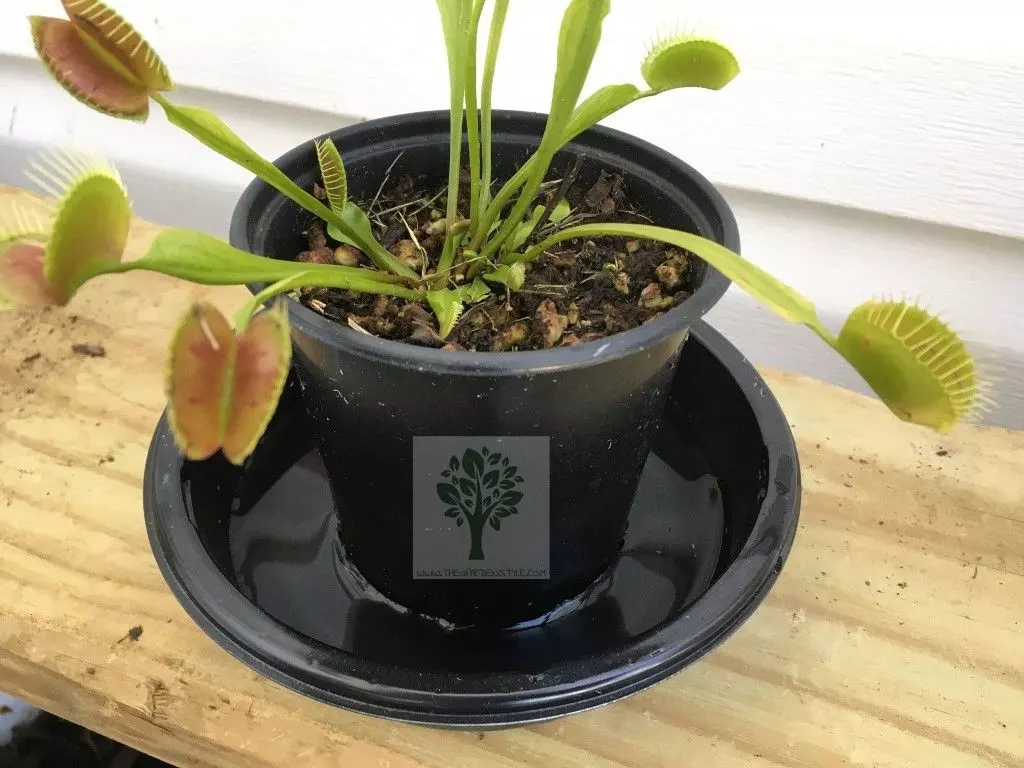
How to Feed Venus Fly Trap
It is important not to force or overfeed for correct care of the Venus fly trap. If you have them on the outside, let them capture their prey themselves.
In the same way, you should not intentionally close the traps without anything inside, this weakens Venus and can cause it to die.
If the plant does not feed, it will not die since they are photosynthesizing, but it will grow slower.
When the Venus Fly Trap (Dionaea muscipula) captures live prey, the leaf remains closed for about 7 to 10 days, this being its digestion process. The leaf may turn black immediately or it may take longer to digest. During this period it will assimilate all its soft parts (that of the prey) leaving only its empty exoskeleton. Under natural conditions, this prey debris is removed by the action of rain and/or wind. If the plant is in the interior you must try to remove it with extreme care using a tweezer and avoiding at all times activating the trap again.
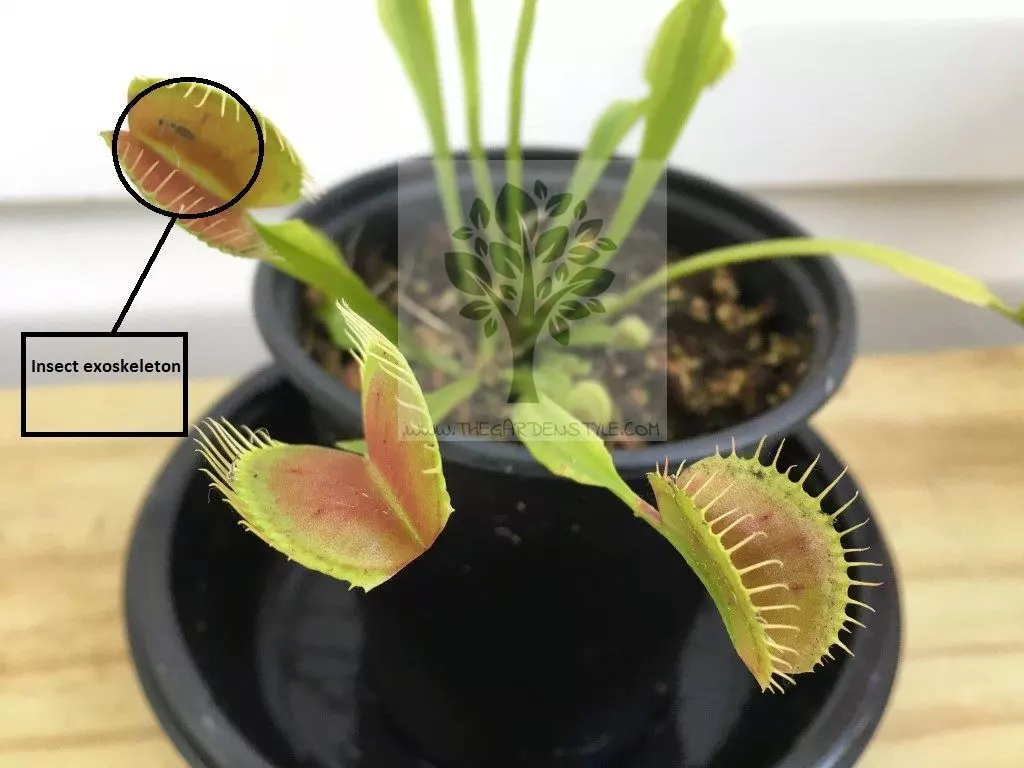
Care for Venus Fly Trap Plants – Watering
Always water with distilled water, rain, or osmosis. The “watering by tray” (which is the traditional method), consists of filling a plate or plastic tray with water about 0.8″ – 1.2″ (2 – 3 cm) high, then putting the pot on top of it. The holes are for it to absorb it from the bottom up.
It is not convenient to keep it waterlogged since it is very easy to rot. We must give them breaks or watering pauses.
Within the watering we have certain periods; in autumn and winter, it is advisable to water when the water in the pot runs out, thus increasing the days of drought. It is recommended that the days of drought be 8 to 10 days.
In spring and summer, it is advisable to water when the water in the pot runs out and wait for one or two days of drought.
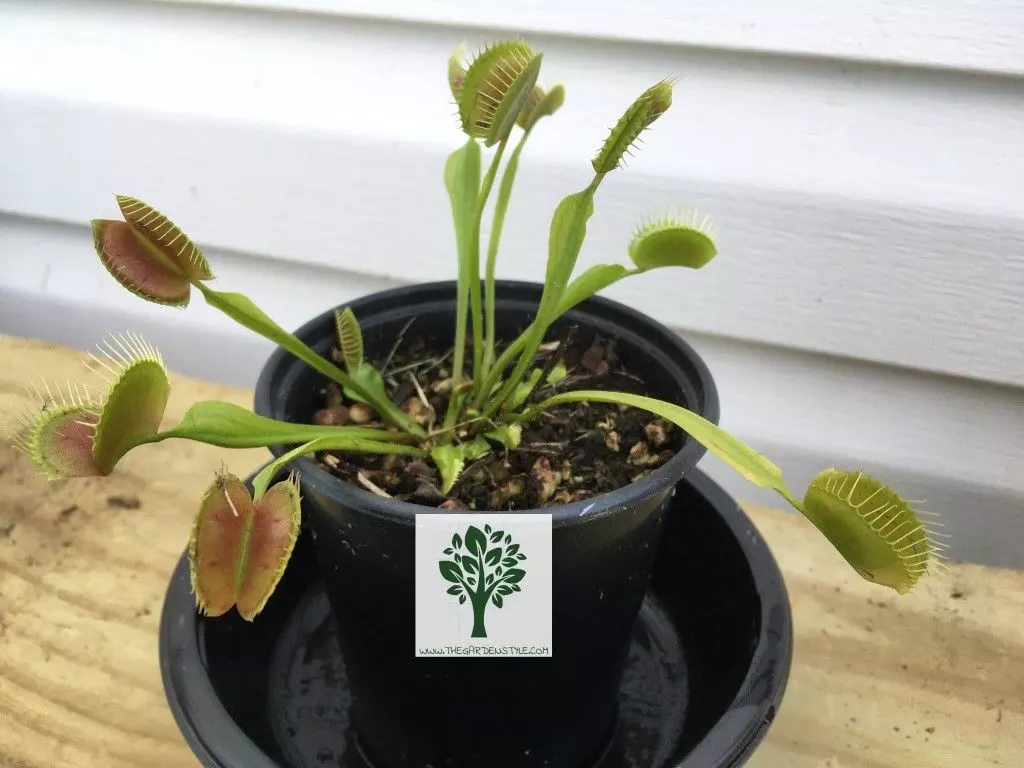
Care for Venus Fly Trap Plants – Soil
Dionaea muscipula in its natural habitat, usually in the area where they develop the soil for plants is very poor. That is why we should not repot or plant our carnivorous plants in normal soil because the excess of nutrients would kill our plants. Due to the excess of mineral salts in the normal soil, their roots will burn and our carnivorous plant will wither to death.
So, knowing this, we must try to simulate as much as possible an environment very similar to the natural habitat of our carnivorous plant. For it, the soil that we must use, is soil for plants poor in nutrients that will benefit the development of our plant, and we will manage to lengthen its life.
Carnivorous plants should not be fertilized. They feed on the insects they hunt. If they were fertilized, their roots would suffer significant damage and they would not survive.
You should use these soils for the proper care of the Venus fly trap (Order it here) or (Buy here). We tested both brands and were very pleased with the quality offered at our plant.
- Professional Grade Natural Sphagnum Peat Moss and Perlite Hand-Blended Mix by BirchSeed Soils - Small 1QT size bag perfect for potting or replanting 1-2 small plants. Packaged in a 6 inch by 9 inch resealable bag.
- Perfect for Carnivorous Plants - Great for adding to acid-loving plants since it has a pH of 3.5 to 4.5, Sphagnum Peat Moss is perfect for use in growing carnivorous plants. Mixed 60/40 with Perlite for exceptional aeration and drainage properties that makes for a light and airy soil such that proper air gets to your plant roots.
- The best choice for planting your own or repotting your store bought Carnivorous plants including Venus Fly Traps, Pitcher Plants, Butterworts, and Sundews.
- Our award winning carnivorous plant soil sold here in a small 1qt bag for re-potting a few plants, Our carnivorous plant soil mix is a hand blended 50:50 mix of peat and perlite, all 100% all natural with no additives.
- Sphagnum Peat Moss and Perlite are ideal mediums for planting most types of carnivorous plants.
- Use our soil to plant Venus fly traps, Sundews or Pitcher Plants. A perfect soil for repotting your store bought plants as they grow.
Hibernation and Reproduction
In winter the Venus flytrap goes through a period of rest called dormancy, or hibernation. It is characterized by the fact that its growth slows down or stops. During this period we must be much more careful with watering. As for advice it is recommended to leave the soil moderately dry.
If in where you live the temperatures and the photoperiod (hours of light) necessary for Venus to enter this state in a natural way are not given. We can induce it artificially giving it the suitable conditions to “deceive” it and make it believe that it must go to sleep.
Generally speaking, this is achieved by putting it in the place reserved for vegetables in the refrigerator, where it should be at a temperature of between 37 and 47°F (3 and 6 °C), where it will lose several of its traps (do not panic, it is absolutely normal) and will take refuge in the bulb, stopping its growth to resume it with greater force in spring.
You must be careful that the temperature is not too low so that the plant is exposed to the effects of freezing, as this could end up drying out its bulb and thus prevent it from sprouting again.
The hibernation process is absolutely necessary for our Venus flytraps and if they don’t do it, they will probably continue with their normal development, but in the spring they could die from energy exhaustion.
Propagation
In this species, the male reproductive parts of the flower (stamens) mature before the female reproductive parts (pistils), which is a mechanism to prevent self-pollination of the plant.
Once cross-pollination takes place, the seeds will mature in about four to five weeks and will be ready for immediate planting if you wish.
However, if you want to do it later, you can store and keep them in a paper bag in the refrigerator, but keep in mind that the germination percentage will decrease as the storage time increases.
After harvesting, you can germinate your own seeds. You should stratify them (if necessary) by sowing them on top of the right soil and provide them with high humidity, intense light, and an ideal temperature of about 77°F (25 °C).
It is recommended to sow several seeds in the same container to encourage growth without fungal contamination. The small seedlings are ready to be repotted to their new home when they have fully developed at least four leaves.
How to Plant Venus Fly Trap
We have prepared a video where we explain how to plant a Venus fly trap. With this, you will be able to give correct care to your venus fly trap.
Flower of Venus Fly Trap
If you take good care of your Venus fly trap then you will see this beautiful flower that will give you seeds to propagate it.
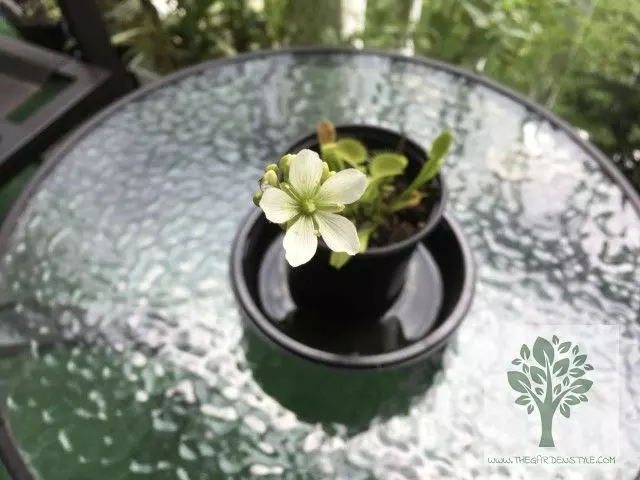
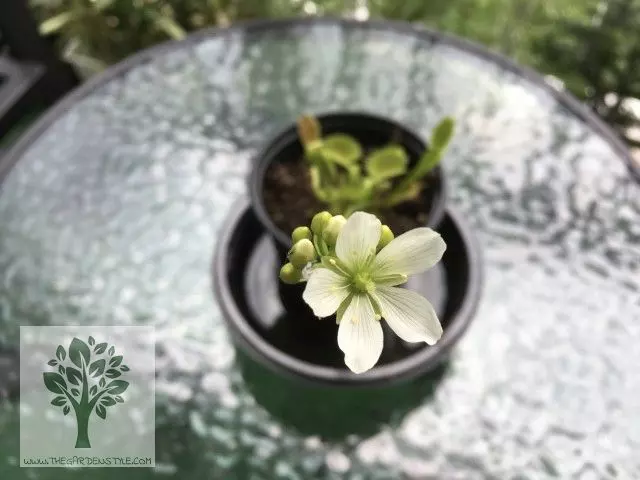
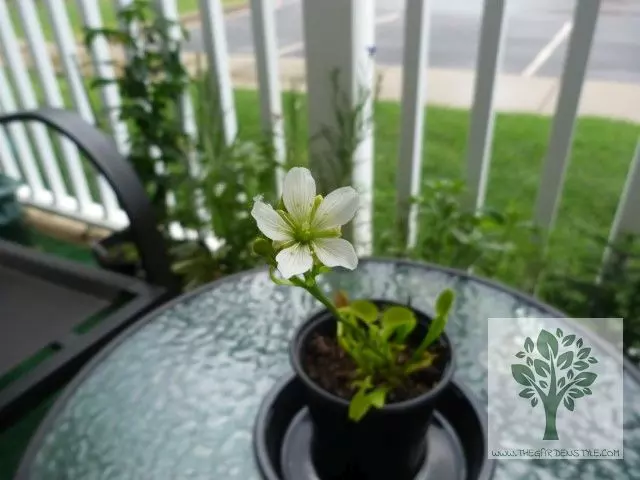
We hope that this article on how to take care of Venus fly trap will be useful and that you will be able to have your plant always in good condition.



